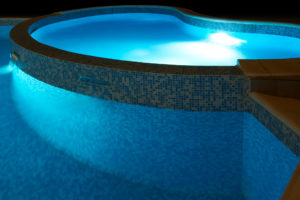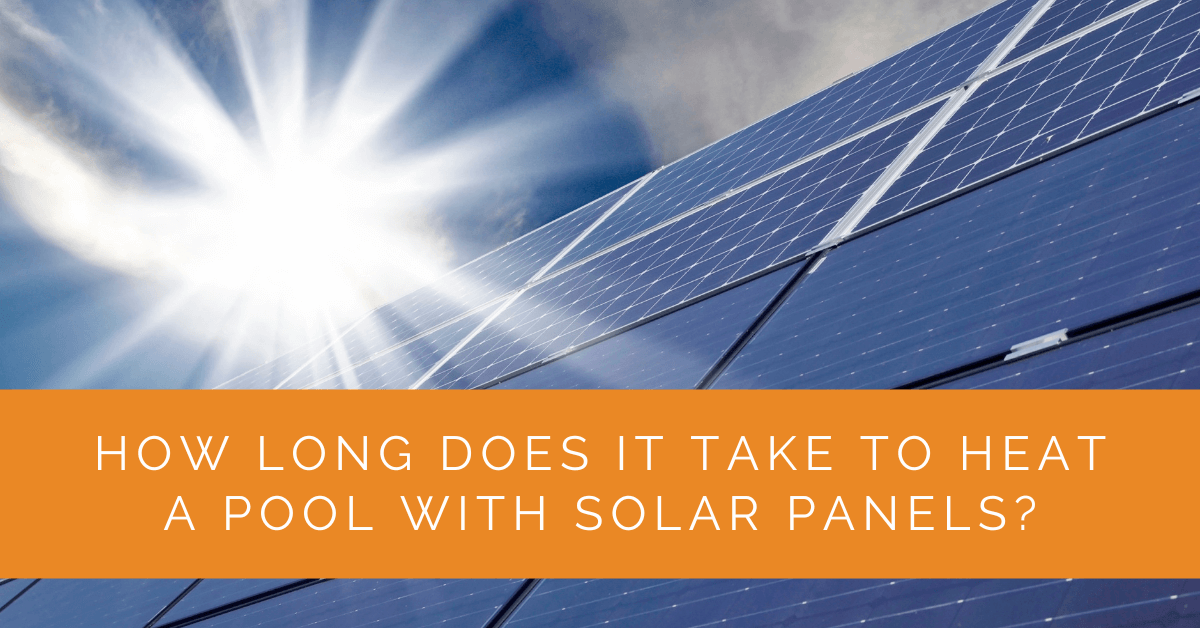Are you curious how long it takes to heat a pool using solar panels? Solar pool heating systems offer an eco-friendly and cost-effective way to warm your pool water. In this article, we will delve into the details of solar pool heating, explore the factors that affect heating time, and provide insights to help you maximize the warmth of your pool.
Contents
- 1 Key Takeaways
- 2 Understanding Solar Pool Heating Systems
- 3 Factors Affecting Pool Heating Time
- 4 Estimating Pool Heating Time
- 5 Additional Tips for Efficient Pool Heating
- 6 Case Study: Efficient Pool Heating with Solar Panels
- 7 Expert Insights From Our Solar Panel Installers About How Long It Takes to Heat a Pool with Solar Panels
- 8 Experience Solar Excellence with Us!
- 9 Conclusion
Key Takeaways
- Solar pool heating systems use panels to convert sunlight into heat for pools, offering an eco-friendly and cost-effective solution.
- The time to heat a pool with solar panels depends on factors like panel size, pool size, sunlight availability, insulation, and pool cover usage. Generally, pools can increase in temperature by 1 to 2 degrees Fahrenheit daily
- To maximize efficiency, consider using larger and more efficient panels, optimizing sunlight exposure, regular maintenance, proper insulation, and using pool covers.
Understanding Solar Pool Heating Systems
Solar pool heating systems utilize solar panels to capture sunlight and convert it into heat energy for your pool. The system typically consists of solar collectors, a pump, a filter, and control valves. As pool water passes through the solar collectors, it absorbs heat from the sun-warmed panels and returns to the pool, raising the overall water temperature.
Factors Affecting Pool Heating Time
Several factors influence the time it takes to heat a pool using solar panels. By understanding these factors, you can effectively manage your expectations and optimize the heating process for your pool setup.
Solar Panel Size and Efficiency
The size and efficiency of your solar panels play a significant role in determining heating time. Larger panels with higher efficiency can generate more heat, allowing for faster pool heating. Investing in appropriately sized and efficient solar panels will enhance the overall performance and shorten the time required to reach your desired pool temperature.
Pool Size and Volume
The size and volume of your pool directly impact heating time. Larger pools with more water require more heat time than smaller pools. The pool’s surface area also affects heat absorption. Increasing the surface area through design features, such as freeform shapes or extensions, can optimize heat transfer and reduce heating time.
Sunlight Availability and Intensity
The availability and intensity of sunlight are crucial factors in solar pool heating. The amount of sunlight your pool receives depends on various factors, such as geographic location, weather conditions, and the time of year. Regions with more sunlight and longer sunny days will experience faster pool heating. Spring and fall seasons may require more time than summer when sunlight is abundant.
Insulation and Pool Cover
Proper insulation and the use of pool covers can significantly impact heating time. Insulating your pool walls and floor minimizes heat loss, allowing the solar system to work more efficiently. Pool covers act as a barrier, preventing heat from escaping the water surface when the pool is not in use. A pool cover during non-swimming hours can help retain heat and decrease heating time.
Estimating Pool Heating Time
Estimating the exact time to heat a pool with solar panels can be challenging due to the numerous variables involved. However, as a general guideline, solar pool heating systems can raise the water temperature by approximately 1 to 2 degrees Fahrenheit per day, depending on the factors mentioned earlier. Achieving the desired pool temperature may take several days or longer, particularly in larger pools or during cooler seasons.

Additional Tips for Efficient Pool Heating
To maximize the efficiency of your pool heating system and ensure optimal performance, consider implementing the following strategies and tips:
Optimal Placement and Orientation
Proper placement and orientation of solar panels or collectors play a crucial role in optimizing the efficiency of your solar pool heating system. Install the panels in a location where they can receive maximum sunlight exposure throughout the day. Ideally, they should face south in the northern hemisphere or north in the southern hemisphere to capture the most sunlight. Avoid shading from nearby structures, trees, or other obstructions that may hinder the panels’ ability to absorb sunlight effectively.
Regular Maintenance and Cleaning
Regular maintenance and cleaning of your solar pool heating system are essential for optimal performance. Inspect the panels periodically to ensure they are free from dirt, debris, or any blockages that could impede the absorption of sunlight. Clean the panels using a mild detergent and water, or consult the manufacturer’s guidelines for specific cleaning instructions. Routine maintenance will help maintain the system’s efficiency and extend its lifespan.
Proper Insulation
Proper pool insulation can significantly minimize heat loss and improve the efficiency of your heating system. Insulate the walls and floor of your pool using insulating materials designed for this purpose. This insulation prevents heat from escaping, allowing your solar pool heating system to work more effectively by retaining the generated heat within the pool water. Insulation is particularly beneficial during cooler periods or climates where maintaining a consistent pool temperature is challenging.
Pool Cover Usage
Using a pool cover is an excellent complementary measure to enhance the efficiency of your solar pool heating system. A pool cover is a protective barrier, reducing evaporation and minimizing heat loss when unused. It helps retain the heat the solar collectors generate, preventing it from dissipating into the atmosphere. By covering your pool during non-swimming hours, especially overnight or during periods of low sun exposure, you can significantly reduce heat loss and conserve energy.
Consider Solar Pool Heaters
In addition to the above tips, consider utilizing solar pool heaters as your pool’s primary or supplementary heating system. Solar pool heaters offer a reliable and eco-friendly solution, utilizing renewable solar energy to warm your pool water. By harnessing the sun’s power, they can effectively heat your pool and extend the swimming season. Combining a solar pool heating system with other energy-efficient practices, such as insulation and pool covers, can optimize heating efficiency and reduce energy consumption.
By following these tips, you can maximize the efficiency and performance of your pool heating system, whether it’s powered by solar energy or other heating methods. Enjoy a comfortably warm pool throughout the swimming season while minimizing energy costs and reducing environmental impact.
Case Study: Efficient Pool Heating with Solar Panels
Background
Solar Panels Network USA was contacted by a homeowner interested in installing a solar pool heating system. The primary goal was to efficiently heat the pool using solar panels, considering the homeowner’s geographic location and pool size.
Project Overview
The project involved designing and installing a solar pool heating system tailored to the homeowner’s needs. Key factors included selecting the right solar panels, optimizing their placement, and implementing strategies to maximize heating efficiency.
Implementation
Step 1: Understanding Solar Pool Heating Systems
We began by educating the homeowner on how solar pool heating systems work. The system included solar collectors, a pump, a filter, and control valves. Pool water would circulate through the solar collectors, absorbing heat before returning to the pool.
Step 2: Selecting and Installing Solar Panels
We selected high-efficiency solar panels based on the pool size and the homeowner’s heating requirements. The panels were installed in a location with maximum sunlight exposure throughout the day. In the northern hemisphere, the panels were oriented southward to capture the most sunlight.
Step 3: Insulating the Pool
To minimize heat loss, we insulated the pool walls and floor using specialized materials. This step was crucial in retaining the heat generated by the solar panels and ensuring that the energy was efficiently transferred to the pool water.
Step 4: Using a Pool Cover
We recommended the use of a pool cover to the homeowner. The cover would help retain heat when the pool was not in use, especially overnight. This addition significantly reduced heat loss and accelerated the heating process.
Step 5: Regular Maintenance
A maintenance plan was established to keep the solar panels clean and ensure all components were functioning correctly. Regular inspections and cleanings were scheduled to maintain the system’s efficiency and longevity.
Results
The implementation of the solar pool heating system resulted in a consistent increase in pool water temperature. On average, the pool temperature rose by 1 to 2 degrees Fahrenheit per day, depending on the weather conditions. The insulation and pool cover effectively minimized heat loss, ensuring the pool remained warm and comfortable for extended periods.
Summary
This case study highlights the importance of selecting the right solar panels, optimizing their placement, and using insulation and pool covers to maximize heating efficiency. By understanding the factors that influence heating time and implementing effective strategies, the homeowner achieved efficient and eco-friendly pool heating.
Expert Insights From Our Solar Panel Installers About How Long It Takes to Heat a Pool with Solar Panels
The efficiency of solar pool heating largely depends on the size and placement of your solar panels. Properly sized and oriented panels can significantly reduce the time it takes to heat your pool.
Senior Solar Installer
Using a pool cover can dramatically improve your pool heating system’s performance. It helps retain the heat generated during the day, minimizing overnight heat loss and speeding up the heating process.
Lead Technician
Regular maintenance of your solar heating system is crucial. Clean panels and well-maintained components ensure maximum efficiency, reducing the time required to heat your pool.
Solar Installation Specialist
Experience Solar Excellence with Us!
Trust in Solar Panels Network USA, where our seasoned experts deliver top-quality solar solutions for homes and businesses nationwide. With a legacy of countless successful installations and a commitment to sustainable energy, we’re your reliable partner in the solar journey. Ready for a brighter, eco-friendly future? Call us now at (855) 427-0058 and harness the sun’s power!
Conclusion
Solar pool heating is an environmentally friendly and cost-effective method to heat your pool. The time it takes to heat a pool with solar panels varies depending on factors such as panel size, pool size, sunlight availability, insulation, and pool cover usage. By understanding these factors and implementing strategies for efficient pool heating, you can optimize the heating process and enjoy a warm pool throughout the swimming season.
Remember, larger and more efficient solar panels will heat your pool faster. Consider the size and volume of your pool when choosing the appropriate panel size. Additionally, take advantage of the sunlight available in your region, especially during summer when heating times are typically faster.
Insulation is key to minimizing heat loss and maximizing the effectiveness of your solar heating system. Properly insulating your pool walls and floor prevents heat from escaping, ensuring that the energy generated by the solar panels is efficiently transferred to the water. Combining insulation with a pool cover can reduce heat loss and significantly decrease heating time.
While estimating the exact time to heat a pool with solar panels can be challenging, a general rule of thumb is that the water temperature can increase by about 1 to 2 degrees Fahrenheit per day. However, remember that this can vary based on the factors mentioned earlier.
About the Author
Solar Panels Network USA stands at the forefront of solar energy solutions, driven by a team of seasoned solar engineers and energy consultants. With over decades of experience in delivering high-quality solar installations and maintenance, we are committed to promoting sustainable energy through customer-centric, tailored solutions. Our articles reflect this commitment, crafted collaboratively by experts to provide accurate, up-to-date insights into solar technology, ensuring our readers are well-informed and empowered in their solar energy decisions.

